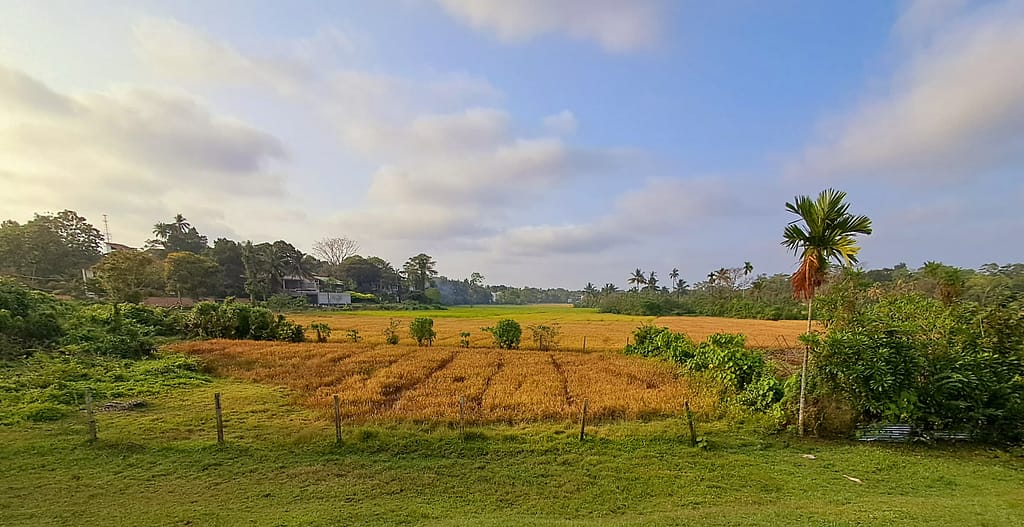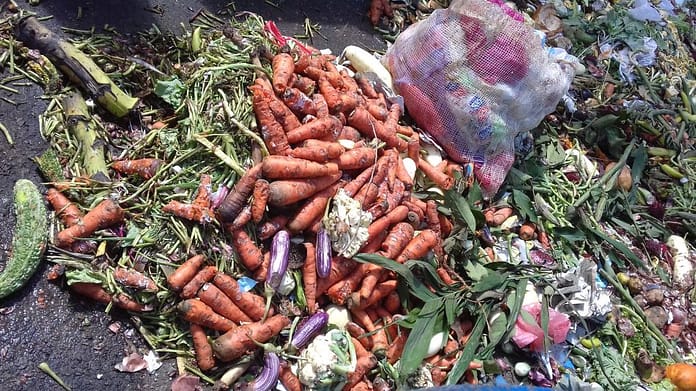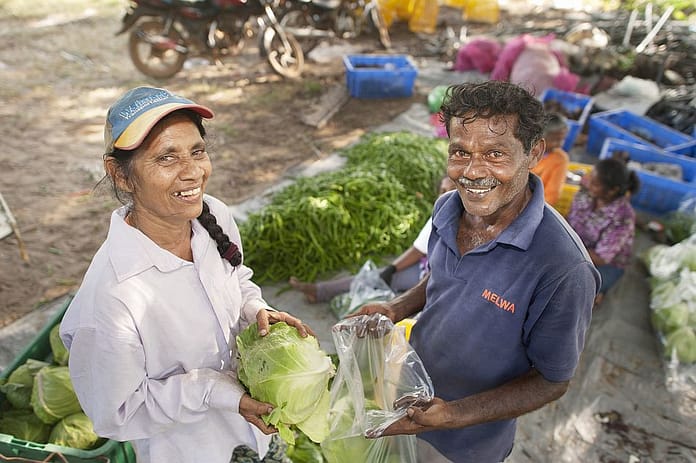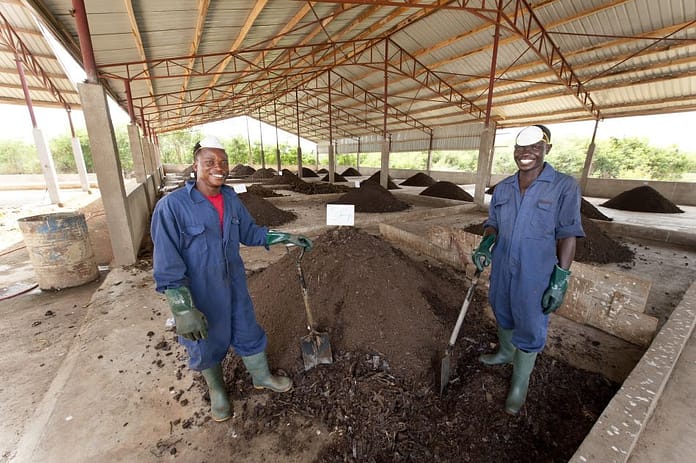
In April 2021, Sri Lanka made headlines: the country banned agrochemicals overnight, aiming to become the world’s first fully organic farming nation. This bold decision was officially driven by concerns to address, for example, the epidemic of the chronic kidney disease (CKDu) assumed to be associated with agrochemicals. It was also a strategic decision to alleviate pressure on dwindling foreign reserves needed for fertilizer imports during a crippling economic crisis. But just seven months later, the government was forced to reverse course amid devastating consequences. Rice harvests dropped by 32%, tea production fell by 18%, and the resulting agricultural collapse triggered widespread food insecurity and economic losses, including an estimated $425 million in lost tea exports alone.
Sri Lanka’s short-lived agricultural revolution raises a critical question: can a country realistically undergo a complete transformation toward organic agriculture on a national scale?
The International Water Management Institute’s Senior Fellow and former Sri Lankan Country Manager Pay Drechsel, along with his colleagues, Piumi Madhuwanthi, Duleesha Nisansala, Dushiya Ramamoorthi and Thilini Bandara, delved into this question in their recent publication. The research underscores the intricate mix of technical, economic, and social challenges that must be navigated to redesign an agricultural system without undermining food security or rural livelihoods.
The feasibility gap: can organic fertilizers replace the role of chemical fertilizers at the scale of the whole country in a biophysical sense?
The short answer is no; hardly in theory and, as the research showed, not in practice, at least for the whole of a country like Sri Lanka.
Chemical and organic fertilizers function in fundamentally different ways: chemical fertilizers deliver concentrated, isolated nutrients that plants can immediately absorb, directly stimulating growth. Organic fertilizers have a much lower nutrient content and primarily function as soil amendments, improving soil health and enhancing crop growth by creating a better agro-ecological environment.
This can be seen as the difference between humans taking for instance an iron supplement versus eating lettuce. The supplement provides an immediately available, concentrated dose covering the daily needs, whereas a woman would need to eat 1.5 kg of lettuce every day for the same amount of iron which, in addition, is less efficiently absorbed.
Compounding the challenge is Sri Lanka’s history of promoting high-yield rice varieties through a long-standing chemical fertilizer subsidy program. Scientists bred these varieties with the expectation of high chemical nutrient inputs. So, when the ban took effect, farmers struggled to supply their crops with enough nutrients through organic fertilizer that was less potent and largely unavailable in the required amounts.
In fact, Sri Lanka does not produce enough raw biomass to generate the quantity of organic fertilizer required to meet national crop nutrient demands. When the authors analyzed this challenge, they found that using all urban waste compost, manure, fecal sludge, and e.g. paddy straw available in the country, would still fall short of rice’s nitrogen requirements by over 50%, let alone other crops. Even with a gradual transition and heavy investment in organic fertilizer production including increased waste collection and co-composting systems, the nutrient gap could not be closed even for rice alone. Bridging this nutrient deficiency gap requires importing additional organic fertilizer.
The economic hurdle: does importing organic fertilizers make economic sense?
The short answer is, again, no; at least not in the current context. Since Sri Lanka cannot produce sufficient organic fertilizer materials domestically, the government would need to initiate large-scale imports of alternative organic fertilizers.
During the ban, this included purchasing Nano-N fertilizer from India and seaweed-based fertilizer from China. While these imports could, in theory, cover the baseline nitrogen requirements for rice production, the authors found the cost of doing so far exceeds that of previous chemical fertilizer imports.
The expenses multiplied quickly because of the high import volumes needed to meet national demand, while equalizing the lower nutrient density of organic fertilizers compared to chemical ones.
The human element: will farmers support such a transition?
The answer is ‘maybe’; but likely on a smaller scale, given the much higher labor and transport needs compared to chemical fertilizer, and only with a significant shift in public opinion, demand, and support systems.
The research, based on farmer and expert interviews, suggests that any future transition would quickly find its biophysical and financial limits even with major investment in infrastructure and improving technical know-how. There would also be a need for targeted efforts to establish trust in organic fertilizers themselves, whether they are subsidized or not.
During the ban, many farmers struggled with the steep learning curve and the time needed to source materials for compost production. Despite their best efforts, 95% of farmers who initiated compost production failed to meet even the minimum recommended application rates.
Cost perceptions play a major role too. After decades of receiving chemical fertilizers for free or at steep discounts, farmers were resistant to adding an extra input cost.
Trust in the organic product itself is also a major hurdle. Farmers frequently raised concerns about the low nitrogen content, slow nutrient release, and possible contamination of organic fertilizers, including unwanted materials like plastic and pathogens. Pop-up private suppliers sold poor-quality inputs, such as mud from reservoir beds packaged as compost, damaging the reputation of organic fertilizer.
Based on these experiences, current farmer sentiment is divided. A survey by a national institution in 2022 showed that just 3% of farmers expressed support for a full transition to organic farming. Nearly half (46%) opposed the idea outright, while a forward-looking majority preferred a gradual, blended approach, combining both organic and chemical fertilizers, to safeguard yields while moving towards more sustainable practices.
Finding paths forward: where can there be progress towards an organic fertilizer revolution?
The authors were able to provide the quantitative data needed to confirm that indeed only a mix of organic and chemical fertilizers can be considered a viable option while a full national transition towards organic inputs would quickly find its domestic limits or be costly and in all cases logistically very difficult. However, the study also found an overlap between areas rich in organic waste and compost demand, supporting a more gradual, regionally tailored transition for certain cropping systems that respond well to organic inputs. Further investigation is needed to identify more cropping systems that would benefit from organic farming methods and could potentially earn organic certification.
“Our research showed the limitations of making a complete shift to organic farming, even when implementing changes gradually,” says Drechsel. “However, by carefully studying which crops and regions would respond best to sustainable methods, countries like Sri Lanka can build the necessary infrastructure, expertise, and stakeholder buy-in that sustainable agricultural systems require to flourish. Thus, despite its lack of success, Sri Lanka’s well-intentioned ‘organic fertilizer experiment’ offers valuable lessons for nations worldwide considering similar agro-ecological transformations.”




